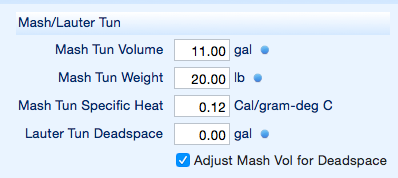Gavin...
I'm not sure if you've touched on this in the thread, but do you build your water from scratch? If so, when do you add the minerals to the water (add to strike water, after mashing, etc.)? If not, then forget I asked!
Hey @Brew_G
I don't build my water from RO yet although am likely to do so in the future on a Pilsner I am planning. I've had decent results (admitedly biased

) so far with some lighter beers I've been making.
I use my tap water which I had tested by
Ward Labs to give me a starting point. I'm fortunate in that my water is good but not ideal.
I also get reports from the city every so often to see if there are any major changes going on. A new report is probably due as we have had a lot of rain in North Texas that may have changed the water profile somewhat. I don't know.
I generally select the target pofile in Bru'n water based on color and balnced/malty/bitter profile and build with that in mind.
For all but very hoppy styles this is involves a small addition of CaCl to bring my Ca levels up. Some CaSO4 if a bitter profile is desired. Again the target numbers fom Bru'n water.
I add all minerals to the strike water which goes through a simple carbon filter (like on an RV) . A ~1/2 of a Campden tablet is added to eliminate Chloramines instantly.
I tackle mash pH seperately
I acidify my full volume mashes with acidulated malt in the calculated amounts so I'm not adding any other acid to the strike water. I have used lactic acid for this in the past and it was added to the strike water just like the minerals. It's easier to ensure it is evenly distibuted this way.
If using RO water my approach would be no different but I would need different mineral additions. Definitely would get me closer to my target water.
Hope that is of some use and not a TL,DR post.


















































![Craft A Brew - Safale S-04 Dry Yeast - Fermentis - English Ale Dry Yeast - For English and American Ales and Hard Apple Ciders - Ingredients for Home Brewing - Beer Making Supplies - [1 Pack]](https://m.media-amazon.com/images/I/41fVGNh6JfL._SL500_.jpg)
























